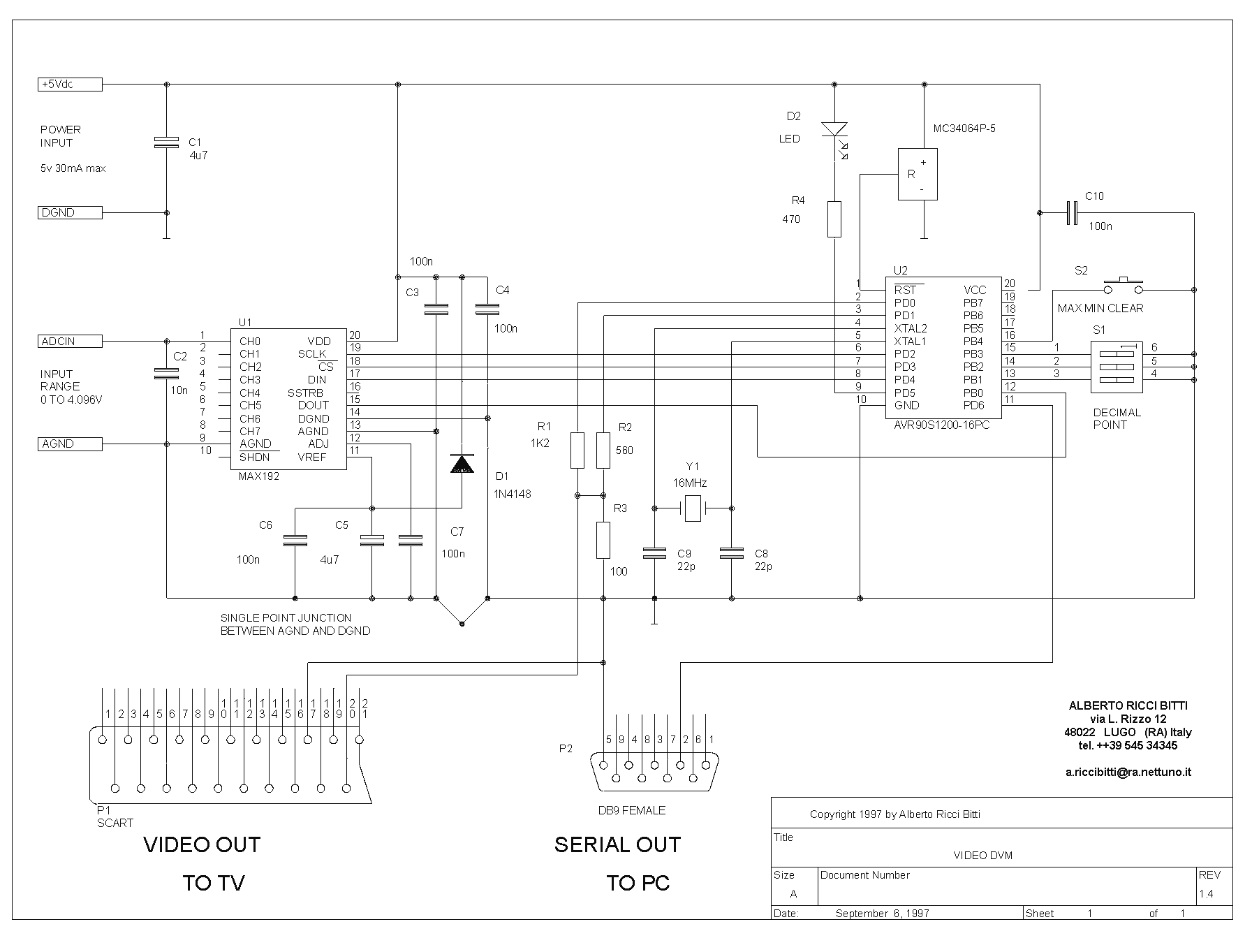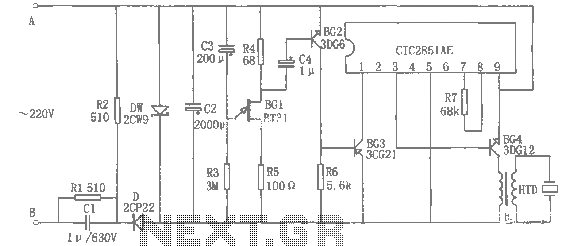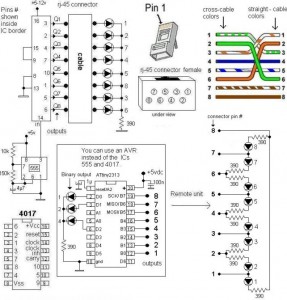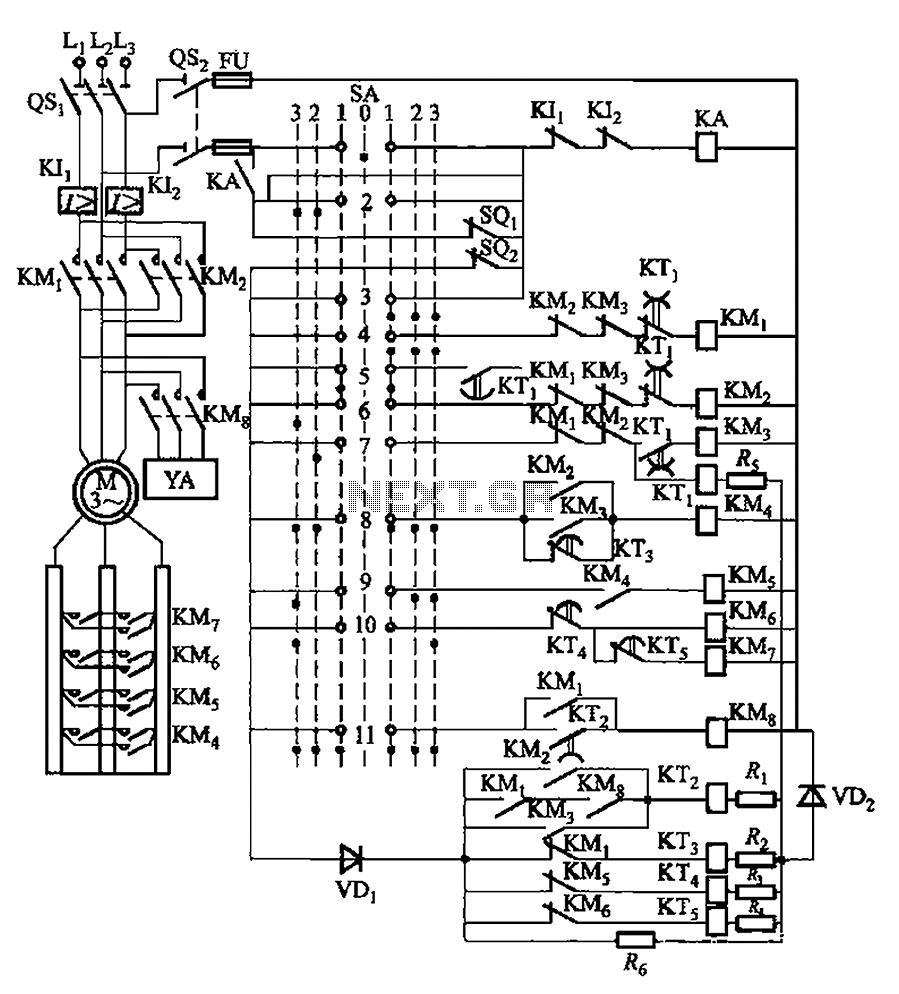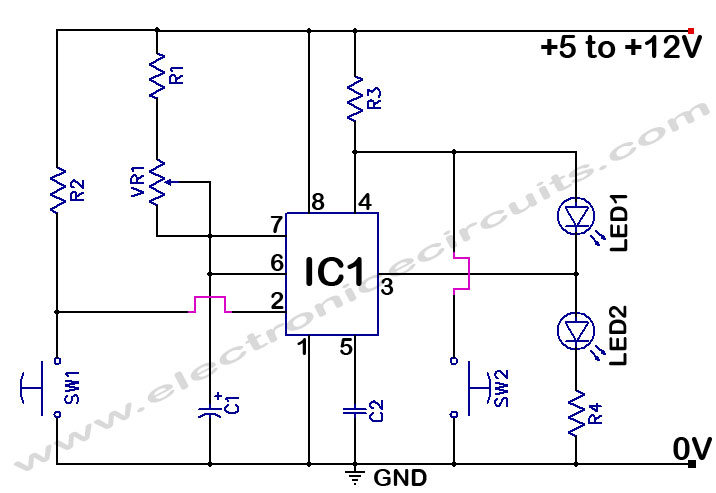
TV signal amplifying circuit diagram conversion
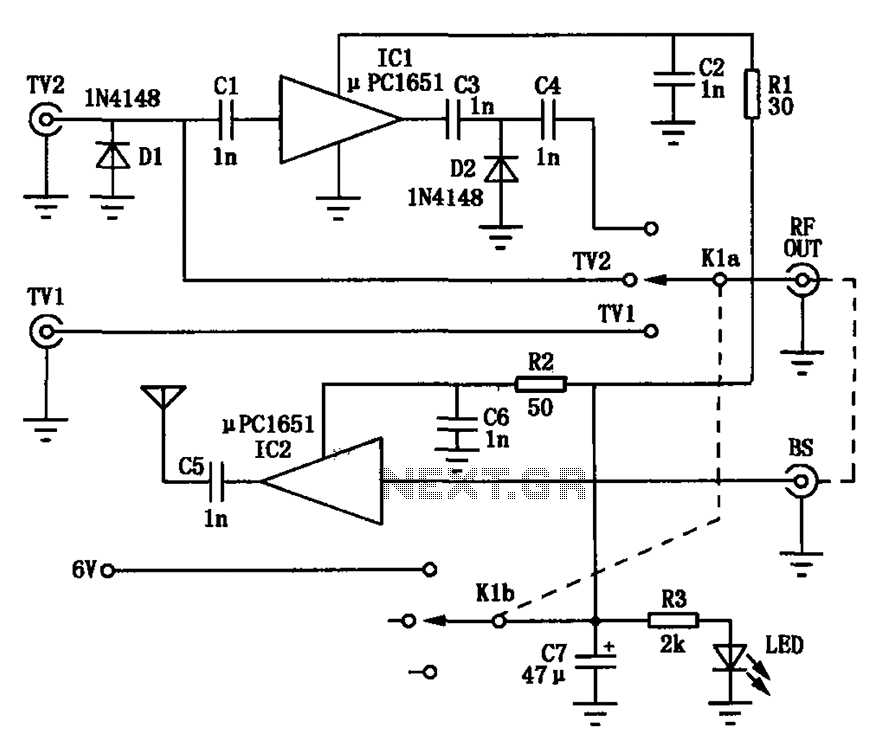
Amplification is utilized to convert video output signals from various devices, such as VCRs and DVD players, which often require amplification of weak output signals. Additionally, it can transmit radio frequency signals over a radius of approximately 7 meters, enhancing the experience while watching television.
The described circuit employs an amplification system designed to enhance the video output signals from devices like VCRs and DVD players. These devices typically produce signals that may be too weak for effective transmission or display on larger screens. The amplification process boosts these signals, ensuring that the output is strong enough for clear viewing.
In addition to video amplification, the circuit also features a radio frequency (RF) transmission capability. This allows the amplified signals to be transmitted wirelessly over a radius of approximately 7 meters. Such functionality is particularly advantageous in home entertainment setups, where it enables users to enjoy their content without the constraints of physical connections between devices.
The schematic design would typically include components such as operational amplifiers (op-amps) for signal amplification, RF modulators for converting the amplified video signals into RF signals, and antennas for effective transmission. Power supply considerations must also be addressed to ensure that the amplification circuits operate within their specified voltage and current ranges.
Overall, this circuit design not only addresses the need for signal amplification but also incorporates wireless transmission capabilities, making it suitable for modern multimedia applications. As shown in FIG amplification is used to convert a variety of devices and TV video output signal, such as some VCRs, DVD players need weak output signal amplification occasions , it can open the radio frequency signal is transmitted to about 7m radius, for more while watching TV.
The described circuit employs an amplification system designed to enhance the video output signals from devices like VCRs and DVD players. These devices typically produce signals that may be too weak for effective transmission or display on larger screens. The amplification process boosts these signals, ensuring that the output is strong enough for clear viewing.
In addition to video amplification, the circuit also features a radio frequency (RF) transmission capability. This allows the amplified signals to be transmitted wirelessly over a radius of approximately 7 meters. Such functionality is particularly advantageous in home entertainment setups, where it enables users to enjoy their content without the constraints of physical connections between devices.
The schematic design would typically include components such as operational amplifiers (op-amps) for signal amplification, RF modulators for converting the amplified video signals into RF signals, and antennas for effective transmission. Power supply considerations must also be addressed to ensure that the amplification circuits operate within their specified voltage and current ranges.
Overall, this circuit design not only addresses the need for signal amplification but also incorporates wireless transmission capabilities, making it suitable for modern multimedia applications. As shown in FIG amplification is used to convert a variety of devices and TV video output signal, such as some VCRs, DVD players need weak output signal amplification occasions , it can open the radio frequency signal is transmitted to about 7m radius, for more while watching TV.
